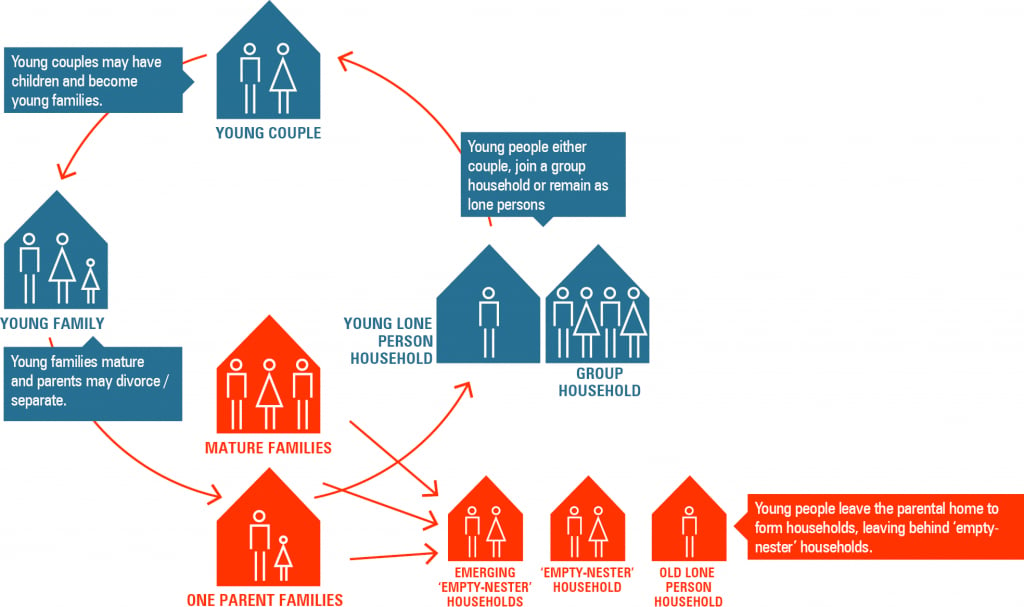Case Studies Economics
The Client
Nillumbik Shire Council
Challenge
Understand the current and future housing needs for an ageing population.
Highlights
The age structure of the local population and its stage in the suburb lifecycle will impact the demand for housing in an area.
Results
Nillumbik is on the cusp of a major transition in housing lifecycle, which requires changes to policy direction.
A changing age structure can pose important challenges to the housing stock of a local area. This is demonstrated in the Shire of Nillumbik, where a more diverse supply of housing is required to meet the demands of its ageing population.
Challenge
Nillumbik Shire Council was interested to understand the current and future housing needs of Nillumbik’s ageing population. The aim of this analysis was to inform the Council’s housing policy and provision of aged-care services for an increasingly significant section of the community.
The .id Solution
.id’s evaluation consisted of four related components:
- Demographic and socio-economic analysis of Nillumbik’s older population
- Housing stock analysis
- Drivers of change
- Forecasts of future housing needs (total dwellings, dwellings by number of bedrooms, retirement living units and aged care beds).
The analysis draws largely from .id’s online demographic resources for Nillumbik (profile.id, atlas.id and forecast.id).
The number of persons aged 55 years and over is forecast to increase from 16,732 in 2015 to 21,361 by 2036. By 2036, one in three residents in Nillumbik will be aged 55+, up from one in four in 2015.

As illustrated in the figure below, Nillumbik is on the cusp of a major transition in its housing lifecycle from mature families to empty nesters and retirees. This shift to smaller and older households will have major implications for housing option in Nillumbik over the next twenty years.

While 94% of the growth of households with persons aged 55+ will be empty nesters and lone person households, many of these residents will continue to occupy large separate houses with four or more bedrooms. An important factor is the tendency for Nillumbik residents to age in place, with the majority of those aged 55+ opting to remain in their family homes rather than relocating outside the LGA.

Source: Australian Bureau of Statistics, Census of Population and Housing 2011. Compiled and presented by .id, the population experts.
Outcomes
The low level of dwelling diversity in Nillumbik runs counter to the housing preferences of retirees. The 2015 Nillumbik Health and Wellbeing Survey found that 43.5% of 56-75 year-olds would like more housing choices to downsize in the local area. This finding was one of many that highlighted a mismatch between future housing demand and supply.
The challenge for local council is to implement measures to diversify the housing options (existing stock and new development) available to older residents in Nillumbik. This includes increasing the supply of 2-3 bedroom townhouses located in close proximity to services and amenities. The report also identified future demand for retirement villages and aged care facilities based on .id’s 55+ housing forecast model.
The strong pattern of ageing in place in Nillumbik looks unlikely to decrease in the coming decades. Future generations of retirees will be similarly motivated to relocate to smaller houses around existing social networks.
To accommodate this demand, the report recommends a number of strategies. The report recommends: changes to future policy direction; strategic planning activities; promotion of housing needs for older residents; actions to support for ageing in place; and economic development initiatives.
Measures to diversify the local housing stock will help to curb the out-migration of ageing residents. Many persons aged 55+ who do move have tended to seek retirement housing options in neighbouring LGAs, in particular Banyule, Whittlesea and Manningham. In addition to recapturing this migratory group, an increase in the supply of 2-3 bedroom medium density housing options may also attract younger age groups to the Shire. This strategy would help smooth out the housing lifecycle issues of one dominant group.
Alongside the increased delivery of suitable housing, further planning and policy approaches to support Nillumbik’s ageing population include promoting mixed-use developments that strengthen facilities and services relevant to older people. Moreover, urban and housing design policies can play an important role in improving the capacity of residents to age in place, while appropriate transport infrastructure can enhance safety and accessibility.
Further Information
Check out articles from our Economics team here, or feel free to book a meeting if you would like to learn more about how we can help you build the evidence base
Join thousands of subscribers ...
STAY INFORMED
Subscribe to monthly updates
Stay up to date about demographic and economic changes around Australia with .id Insight, our monthly newsletter.
FEED YOUR CURIOSITY
Follow the .id blog
Receive articles twice a week about demographic, economic and housing trends and more. We promise it will be interesting.


